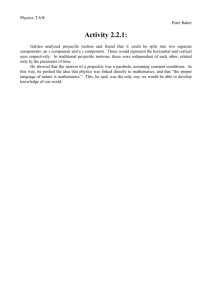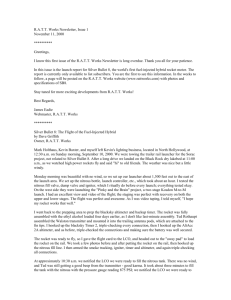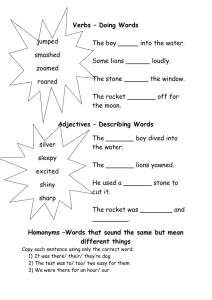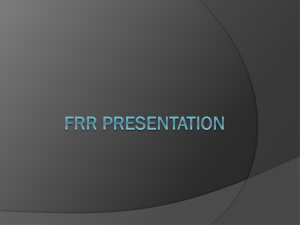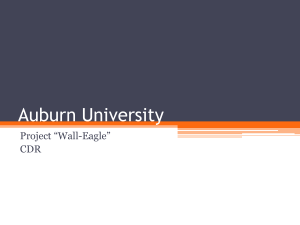Two-Liter Bottle Rocket Introduction: Using human muscle power
advertisement
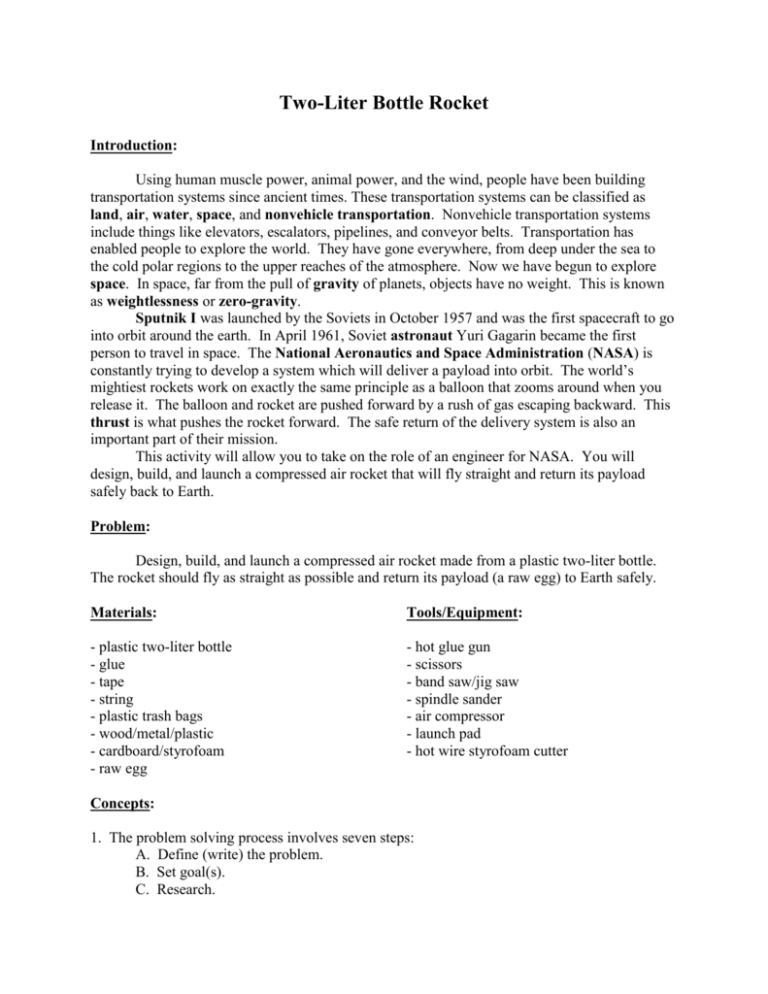
Two-Liter Bottle Rocket Introduction: Using human muscle power, animal power, and the wind, people have been building transportation systems since ancient times. These transportation systems can be classified as land, air, water, space, and nonvehicle transportation. Nonvehicle transportation systems include things like elevators, escalators, pipelines, and conveyor belts. Transportation has enabled people to explore the world. They have gone everywhere, from deep under the sea to the cold polar regions to the upper reaches of the atmosphere. Now we have begun to explore space. In space, far from the pull of gravity of planets, objects have no weight. This is known as weightlessness or zero-gravity. Sputnik I was launched by the Soviets in October 1957 and was the first spacecraft to go into orbit around the earth. In April 1961, Soviet astronaut Yuri Gagarin became the first person to travel in space. The National Aeronautics and Space Administration (NASA) is constantly trying to develop a system which will deliver a payload into orbit. The world’s mightiest rockets work on exactly the same principle as a balloon that zooms around when you release it. The balloon and rocket are pushed forward by a rush of gas escaping backward. This thrust is what pushes the rocket forward. The safe return of the delivery system is also an important part of their mission. This activity will allow you to take on the role of an engineer for NASA. You will design, build, and launch a compressed air rocket that will fly straight and return its payload safely back to Earth. Problem: Design, build, and launch a compressed air rocket made from a plastic two-liter bottle. The rocket should fly as straight as possible and return its payload (a raw egg) to Earth safely. Materials: Tools/Equipment: - plastic two-liter bottle - glue - tape - string - plastic trash bags - wood/metal/plastic - cardboard/styrofoam - raw egg - hot glue gun - scissors - band saw/jig saw - spindle sander - air compressor - launch pad - hot wire styrofoam cutter Concepts: 1. The problem solving process involves seven steps: A. Define (write) the problem. B. Set goal(s). C. Research. 2. 3. 4. 5. 6. 7. 8. D. Develop (sketch) alternative solutions. (minimum of 3) E. Select the “best” solution and explain why. F. Implement (build) the solution. G. Test and adjust. Transportation is moving people and/or goods from one place to another. Transportation systems can be classified as land, air, water, space, and nonvehicle transportation. NASA stands for National Aeronautics and Space Administration. The four basic parts of any transportation system are: guidance; propulsion; payload; and control. Newton’s Third Law of Motion says, “For every action there is an equal, but opposite reaction.” The six recovery systems of a rocket include: parachute; streamer; tumble; featherweight; glide; and helicopter recovery. Aerodynamics is the study of how things are affected by the flow of air around them. Specifications: 1. The result must be a space transportation vehicle capable of carrying a payload (the egg). 2. The vehicle must include guidance, propulsion, payload, and recovery systems. 3. The bottom bottle that serves as the engine for the rocket can not be cut, punctured, or damaged in any way or the rocket will not hold the air pressure. 4. The fins can’t extend any lower than where the bottle begins to narrow into the neck. Otherwise they will interfere with the launch pad. 5. The rocket must launch as one complete unit, but may come down as separate pieces. 6. On launch day, the rocket will be launched once and it will be judged on how straight it flies. When the rocket is recovered, the payload will be inspected for damage. Evaluation: 1. The following are required: - rocket design - creativity - workmanship - rocket performance - flight path (straightness of flight) - payload survival (egg’s condition) - problem solving log sheet (steps 1-7) 15 pts 15 pts 15 pts 15 pts 40 pts Total = 100 pts 2. In addition, winners of each of the following will receive additional points: - Most creative (as voted by the class) 10 pts - Best built (as voted by the class) 10 pts - Best overall flight (as voted by the class) 10 pts




